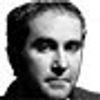This year isn't exactly dull for Britons who like a bit of spectacle.
In addition to the first Olympics to be staged in these islands for more than 60 years, comes an event which marks precisely Queen Elizabeth II's six decades on the throne: the Diamond Jubilee.
Of all the pomp to be expected of such a notable anniversary, there is one pageant which stands out.
The first Trooping of the Colour predated the last London Olympic opening ceremony by 200 years. In the period since becoming queen, Elizabeth II's official birthday celebrations have become something of an annual fixture in many living rooms across the country because of live television coverage.
Like many people, as a boy I was repeatedly transfixed by a Saturday morning's viewing in which my parents' TV screen seemed like a window to a bygone age. Massed regiments of foot soldiers, brass bands and regimental standards provided magical scenes.
The ceremony involves regimental flags or 'colours' being carried down the ranks of soldiers. For more than a century, the reigning monarch has personally taken the salute before inspecting the more than 1,400 troops on show. The only exception during the present Queen's reign occurred in 1955, when a national train strike scuppered plans for the parade.
Given the number of servicemen and women on show not only on Horseguards Parade but during the entire day - including the now traditional fly-past by the Royal Air Force - the arrangements have to be incredibly well-drilled and precise. A full rehearsal known as The Major General's Review is held a week or more in advance of the actual celebrations.
This year, all eyes will be on The Coldstream Guards whose new regimental banners are being 'trooped' before the Queen, having been given to them by her in a ceremony at Windsor Castle.
However, many people's real attention will be drawn not to the hoisting of the colours but to the horses on duty. Whether escorting the monarch away from Buckingham Palace or being inspected by her on Horse Guards Parade, the plumes and dress of the Household Cavalry are for many - in this country and abroad - the very essence of British-ness.
Their ranks comprise both Farriers and Troopers, who draw and wield their axes and swords respectively as they advance past the monarch of the day.
Thankfully for the tourists and squeamish alike, the Farriers rarely rely on their axes for anything other than ceremonial purposes these days. In times past, they would be used to despatch horses which had been wounded in battle before lopping off their hooves. These would be marked with a regimental number so that barracks would know how many of the animals had fallen in action.
Just as that tradition has lapsed, so too has the idea of the Queen observing the event on horseback. She has watched every Trooping the Colour since 1987 from a carriage following the retirement of her favourite mount, a black mare called Burmese.
Nevertheless, even in her Diamond Jubilee year she might be as rapt as the rest of us not in the idea of her Official Birthday parade but the rich imagery which that birthday draws together.
